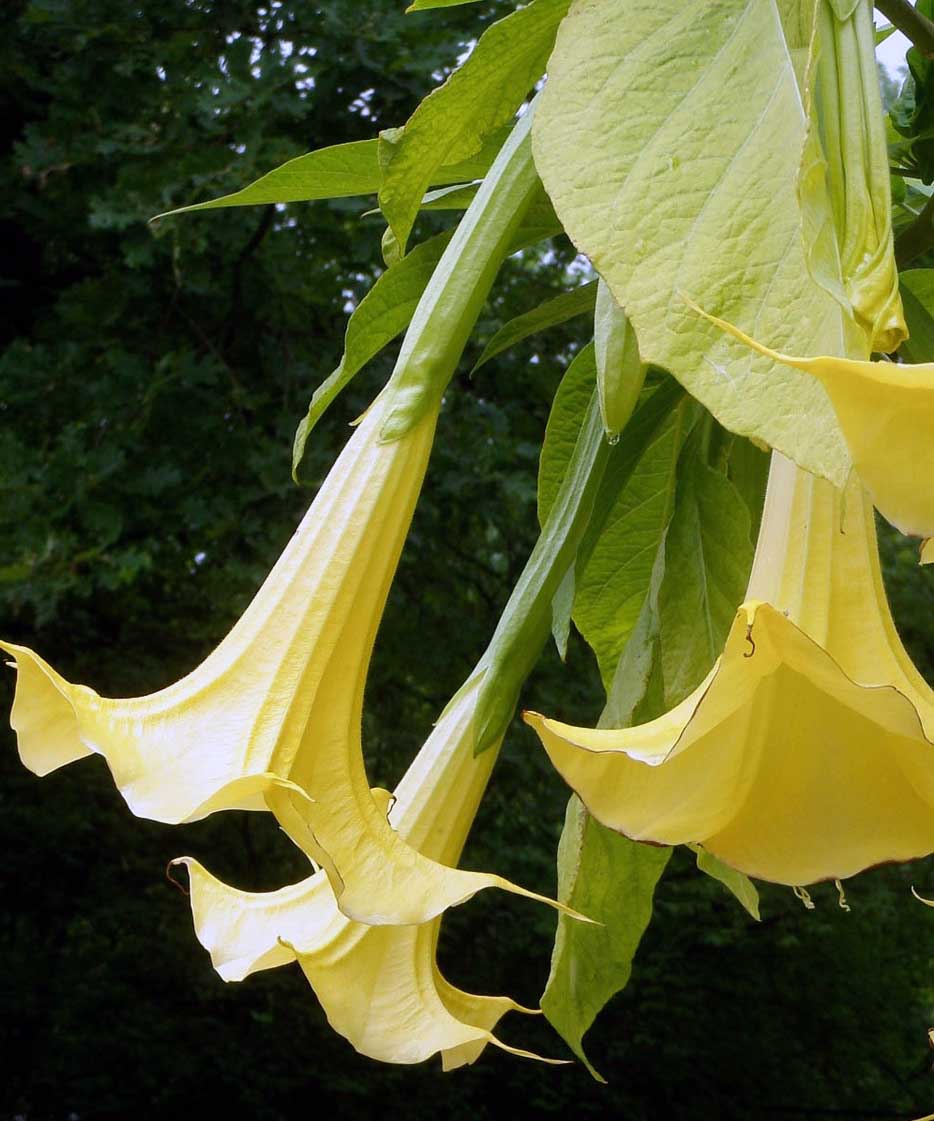Description
Sound Off with a Symphony of Color and SmellAngel’s Trumpets, also known as Brugmansia, are stunning, fragrant plants that produce large, trumpet-shaped flowers in shades of white, yellow, pink, orange, and red. Native to South America, these plants are easy to care for, making them a popular choice for gardens and indoor settings. However, they require specific care to ensure they thrive and produce abundant blooms.LightAngel’s Trumpets thrive in full sun or partial shade, depending on the climate. In hot, dry climates, they do best in partial shade, as direct sunlight can scorch the leaves. In cooler climates, they can tolerate full sun. When grown indoors, place Angel’s Trumpets near a window that receives bright, indirect sunlight. In terms of temperature, Angel’s Trumpets prefer warm weather and will not tolerate frost. They do best in temperatures between 60 and 75 degrees Fahrenheit.SoilAngel’s Trumpets prefer moist, well-draining soil. In the garden, add organic matter such as compost or aged manure to the soil to improve its quality and drainage. When grown in containers, use a potting mix that contains peat moss, perlite, and vermiculite to ensure good drainage.WaterAngel’s Trumpets require regular watering to keep the soil moist but not waterlogged. Water deeply once or twice a week, depending on the weather and soil conditions. In hot, dry weather, they may require more frequent watering. When grown in containers, check the soil moisture level regularly by sticking your finger into the soil. If it feels dry to the touch, water the plant deeply.FertilizerAngel’s Trumpets are heavy feeders and require regular fertilization to produce abundant blooms. Use a balanced, slow-release fertilizer every two weeks during the growing season, from spring through fall. When grown in containers, fertilize every week with a water-soluble fertilizer, diluted to half strength.PruningAngel’s Trumpets benefit from regular pruning to promote bushy growth and encourage more blooms. Prune in early spring before new growth appears, removing any dead or damaged branches, as well as any branches that cross or rub against each other. To promote branching and more blooms, pinch back the tips of young shoots. If the plant becomes leggy or overgrown, cut it back by up to one-third its height. After pruning, apply a balanced fertilizer to encourage new growth.Pest and Disease ControlAngel’s Trumpets are susceptible to several pests and diseases, including aphids, spider mites, whiteflies, and fungal diseases such as powdery mildew. To prevent these problems, keep the plant healthy and stress-free by providing adequate water, fertilizer, and pruning. Monitor the plant regularly for signs of pests or disease, and treat promptly with an appropriate insecticide or fungicide if necessary.PropagationAngel’s Trumpets can be propagated from seeds or cuttings. To propagate from seeds, collect the seeds from the plant after the flowers have faded and the seedpods have turned brown. Sow the seeds in a well-draining potting mix and keep the soil moist. The seeds will germinate in two to four weeks. To propagate from cuttings, take a 6-inch cutting from a healthy, mature plant in late spring or early summer. Remove the lower leaves and dip the cut end in rooting hormone. Plant the cutting in a well-draining potting mix and keep the soil moist. The cutting will root in four to six weeks.





